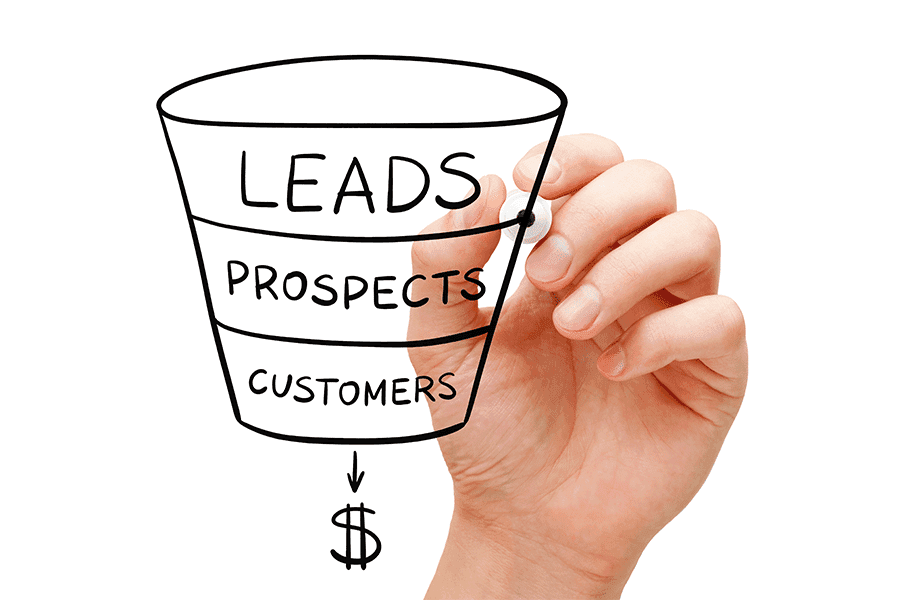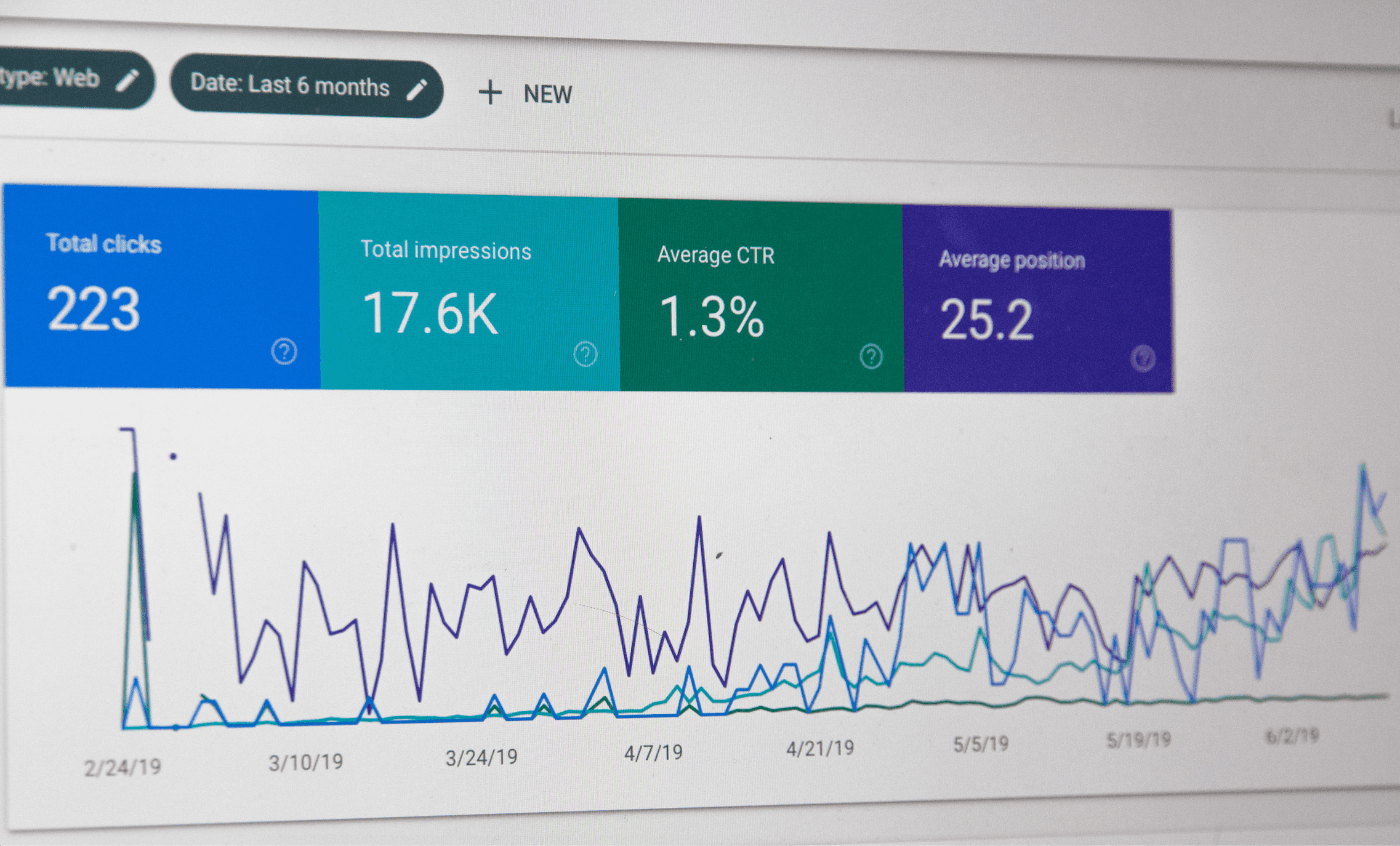Email Marketing Analytics: 8 Key Metrics You Should Measure And Why

In the world of digital marketing, understanding your email marketing campaign’s effectiveness is critical for continuous improvement and growth.
One way to assess this effectiveness is by examining specific key metrics associated with your campaign. From the delivery rate, open rate, and click-through rate, to conversion rate, and many more, these metrics provide valuable insights into your campaign’s performance.
However, understanding these metrics in isolation isn’t enough; they influence each other in various ways and form an interconnected web of cause and effect.
In this piece, we’ll delve into these key email marketing analytics metrics, their significance, and how they correlate to provide you with a holistic view of how to track and create a successful email marketing campaign.
Coming Up:
The Importance of Email Marketing Analytics
Using Email Marketing Metrics to Improve Your Campaigns
The Interconnection of These Metrics
The Importance of Email Marketing Analytics

Email marketing doesn’t give way to a one-size-fits-all strategy. Analytics play a critical role in understanding what resonates with your audience. By tracking and analyzing specific metrics, you gain insights into your subscribers’ behavior, preferences, and interests. This data then allows you to tailor your email campaigns for better performance and engagement, moving beyond simple “batch and blast” approaches to targeted, relevant messages.
Email marketing metrics are more than just numbers – they tell a story about your campaign’s performance, guiding your future strategy. They help identify areas where your emails are performing well and where they may need improvement. From improving your subject lines to optimizing your send times, these metrics are a goldmine of information. Using these metrics effectively helps to ensure that your email marketing campaigns are not based on guesswork but on solid data and proven trends.
Lastly, email marketing is an investment, and like any investment, the return is crucial. Metrics provide a quantifiable measure of your campaigns’ success or areas for improvement. A high open rate, for instance, signifies that your subject lines are compelling, while a high conversion rate indicates that your email content effectively drives action. By continuously tracking and optimizing these metrics, you can improve your email marketing’s effectiveness, ultimately boosting your overall return on investment (ROI). Thus, the impact of these metrics on your ROI is both direct and significant. Without them, you would be marketing blindly, with no clear understanding of what’s working and what isn’t.
Using Email Marketing Metrics to Improve Your Campaigns

Regularly Track Metrics for Real-time Adjustments
By keeping a close eye on your key metrics such as open rate, click-through rate, and conversion rate, you’re enabled to make quick decisions and adjustments. If your open rate is dropping, you can immediately experiment with different subject lines or send times to see what performs better.
Analyze Metrics for the Identification of Trends and Behaviors
Studying your metrics over a longer period can help you identify broader trends and patterns in your audience’s behavior. You might find that your emails get better engagement on certain days of the week or times of day, or that certain types of content or offers consistently drive higher click-through and conversion rates.
Understand Metrics to Tailor Campaigns
The insights you gain from your metrics aren’t just useful for immediate adjustments — they’re also critical for shaping your broader strategy. If you find that personalized content significantly boosts your engagement rates, you might decide to invest in tools or strategies that enable even more personalization. If high engagement correlates with certain topics or types of offers, you can ensure to focus more of your content around these areas. By understanding what each metric signifies and how they correlate with each other, you can tailor your campaigns to better match your audience’s needs, preferences, and behaviors.
8 Key Email Marketing Metrics

1. Delivery Rate

The delivery rate represents the percentage of emails successfully delivered to the recipient’s inbox out of the total sent. It doesn’t account for emails that bounced or were marked as spam.
Importance and Impact on Email Marketing
• Fundamental Metric: The delivery rate is often considered the first checkpoint of your email campaign’s effectiveness. It directly correlates with your email campaign’s reach, determining how many subscribers are getting your messages. Without a strong delivery rate, later stages of the email marketing funnel (such as open rate, click-through rate, or conversion rate) can’t fully materialize. If your emails aren’t reaching your audience in the first place, all other efforts to drive engagement, incite action, or foster brand loyalty through the campaign could fall flat. It’s like throwing a party; you can plan the best event, but if the invitations never reach the guests, no one will show up.
• Cost-Effectiveness: Ensuring successful delivery is a matter of both financial and strategic efficiency. From crafting the perfect message, designing the email layout, and segmenting the audience, to scheduling the send – each step in preparing an email campaign consumes resources, both in terms of time and money. If the emails don’t get delivered, these resources are essentially wasted. Moreover, a low delivery rate might lead to unnecessary expenses in investigating and addressing deliverability issues. In a broader perspective, maintaining a high delivery rate ensures your email marketing maintains a strong return on investment (ROI), maximizing the value derived from every dollar spent.
Tips on Improving the Delivery Rate
• Clean, Permission-Based List
Ensuring your email list is clean and permission-based is a key part of maintaining high delivery rates. This involves routinely updating and cleaning your email list to remove inactive addresses, duplicates, or addresses that have bounced multiple times. In addition, it’s vital to make sure you’re only sending to people who have explicitly given their consent to receive your emails, usually via a double opt-in method. This practice not only respects your recipients’ wishes but also helps protect your sender’s reputation, contributing to better delivery rates in the long term.
• Warming-Up IPs: If you’ve recently switched to a new IP address, it’s important to establish a positive reputation with Internet Service Providers (ISPs). One effective way to do this is by warming up your IP—gradually increasing the volume of emails you send out rather than sending large batches immediately. Start with your most engaged subscribers and progressively include less engaged ones. This strategy can help mitigate the risk of ISPs flagging your emails as spam, leading to more successful deliveries.
• Avoid Spam-Like Content: ISPs and email clients use spam filters to block or flag emails that appear spam-like. To keep your emails from being marked as spam, avoid practices like using excessive exclamation marks, writing in all caps, or employing common spam trigger words (like “free,” “buy now,” “guarantee,” etc.). Also, ensure a balanced image-to-text ratio and avoid including too many links in your emails. These practices help ensure your emails are perceived as genuine and valuable, increasing your chances of making it into the inbox.
• Email Authentication Protocols: Implementing email authentication protocols is an essential part of proving to ISPs that your emails are legitimate and improving your delivery rates. This includes protocols like SPF (Sender Policy Framework), which verifies the IP sending the email; DKIM (DomainKeys Identified Mail), which provides an encryption key and digital signature that verifies the email wasn’t tampered with during transmission; and DMARC (Domain-based Message Authentication, Reporting & Conformance), which allows senders to specify how to handle emails that fail SPF or DKIM checks. These measures add credibility to your emails, making ISPs more likely to deliver your messages successfully.
2. Open Rate

The open rate measures the percentage of recipients who open an email from the total number of emails delivered. For instance, if you send 100 emails and 25 are opened, your open rate is 25%.
Significance in Gauging Subject Line Effectiveness
• Subject Line Performance Indicator: The open rate is a direct reflection of the effectiveness of your email subject lines. It’s a clear indicator of whether your subject lines are engaging and enticing enough to get recipients to open your emails e.g if your open rates are lower than the industry average, it might suggest that your subject lines aren’t as compelling as they could be.
Suggestions on How to Increase the Open Rate
• Crafting Compelling Subject Lines: The subject line is the first thing recipients see, and it often determines whether they open the email. By creating intriguing, curiosity-piquing subject lines, you can significantly boost your open rates. For instance, instead of a generic subject line like “Newsletter Edition 5,” you could use something more enticing like “5 Proven Ways to Boost Your Productivity Today.”
• Segmenting Your Audience for Personalization: By grouping your audience into different segments based on factors like interests, purchase history, or location, you can personalize your email content, including subject lines, to better cater to each segment’s needs and interests. For example, if a segment of your audience has shown interest in a particular product category, you can tailor your subject lines to highlight content related to that category.
• Testing Different Send Times: The time you send your emails can also impact your open rates. By testing different send times, you can find when your audience is most active and likely to open emails. For instance, you might find that emails sent on Tuesday afternoons have higher open rates compared to those sent on Friday nights.
3. Click-Through Rate (CTR)

The Click-Through Rate (CTR) is a crucial email marketing metric representing the ratio of users who click on a specific link within your email to the total number of users who viewed the email (opened the email). This metric is usually expressed as a percentage.
Role in Understanding Subscriber Engagement
• Engagement Indicator: A high CTR is indicative of high audience engagement. It suggests that your email content is not just interesting enough to prompt opens (as reflected by the open rate), but also compelling enough to encourage subscribers to click on your links. For instance, if you send out an email to 1000 subscribers and 200 of them click a link in the email, your CTR is 20%.
• Content Relevance: A low CTR, on the other hand, might signify that your content or the offer you’re promoting is not resonating with your audience. In this case, you might need to re-evaluate the relevance and value of your content.
Tips on Enhancing CTR
• Clear and Compelling Calls to Action (CTAs): Your CTAs should be action-oriented and create a sense of urgency. Consider this, instead of using a generic CTA like “click here”, you could use “Get my discount now!” or “Claim your exclusive offer!” to make it more appealing.
• Engaging and Relevant Content: The content in your email should be tailored to your audience’s interests and needs. If you’re a fitness brand sending out an email about a new protein shake, you could include a short, engaging piece about the benefits of protein for muscle recovery.
• Noticeable Links and Buttons: Make sure the links and buttons in your email are easy to find and click on. You could use a bright, contrasting color for your CTA button to make it stand out from the rest of the email content. Larger buttons can also be easier to click, especially on mobile devices.
4. Conversion Rate

The conversion rate is the percentage of email recipients who completed a desired action after clicking on a link in the email. This action could be anything from making a purchase, signing up for a newsletter, filling out a survey, or downloading a whitepaper. If 100 people clicked on a link in your email and 5 of them made a purchase, the conversion rate would be 5%.
Importance in Tracking the Effectiveness of the Email’s Call-to-Action
• Performance Indicator: The conversion rate directly indicates how effective your email content and call-to-action (CTA) are in prompting recipients to take the desired action. A high conversion rate signifies that your email successfully motivates recipients to act.
• Goal Achievement: It also shows if your email marketing strategy is helping you to achieve your defined goals, whether they’re increasing sales, sign-ups, or any other action.
Ways to Boost Conversion Rate
• Clear and Compelling Call To Action (CTA): Ensure your call-to-action is visible, clear, and compelling. It should clearly tell the reader what you want them to do next. So, instead of a vague “Click here,” use specific commands such as “Shop now,” “Download the guide,” or “Claim your discount.”
• Alignment of Email Content and Landing Page: The email and the landing page should have a consistent message, design, and tone. If the email promises a discount on a product, the landing page should clearly reflect that. This consistency minimizes confusion and keeps the user’s experience smooth, increasing the likelihood of conversion.
• Simplify the Conversion Process: The easier it is for a recipient to complete an action, the more likely they are to do it. If the goal is to get sign-ups for a newsletter, minimize the information they have to input (like just an email address instead of full contact details). If it’s a purchase, ensure that the checkout process is simple, fast, and mobile-friendly.
5. Bounce Rate

The bounce rate represents the percentage of your total emails sent that could not be delivered to the recipient’s mailbox. There are two types of bounces – “hard” bounces and “soft” bounces. Hard bounces occur when delivery is attempted to an invalid, closed, or non-existent email address. Soft bounces occur when the email is sent to an active email address but bounces back due to reasons like the mailbox being full or the email server being down.
Importance in Assessing the Quality of Your Email List
• Health Indicator: High bounce rates often indicate problems with your email list, such as outdated or misspelled email addresses. This suggests that your email list may require maintenance and cleanup.
• List Validity: A low bounce rate typically signifies that your email list contains valid, active email addresses, which is crucial for successful email marketing.
Strategies for Reducing Bounce Rate
• Regular List Cleaning: Consistently clean and update your email list. Remove inactive users and addresses that have been hard-bounced. For example, if you’re sending a monthly newsletter, consider running a list cleanup every quarter.
• Double Opt-in: Use a double opt-in process when acquiring new subscribers. This means that after a user initially signs up, they receive a confirmation email where they need to confirm their subscription. This ensures the entered email address is valid and belongs to someone interested in your content.
• Spam Triggers: Avoid common spam triggers in your emails, such as using all caps, excessive punctuation, or spammy words and phrases like “free”, “guarantee”, “no obligation”, etc. If email servers flag your emails as spam, they may bounce or land in the spam folder, which is not beneficial for your campaign.
Remember, a high bounce rate can impact your sender’s reputation, which can further influence email deliverability in the future. Therefore, it’s important to manage and to maintain the health of your email list.
6. Unsubscribe Rate

The unsubscribe rate is calculated as the percentage of recipients who opt out of your
email list after receiving an email. This rate can be crucial in understanding the satisfaction of your subscribers with your email content.
For instance, if you have 1000 email subscribers and 10 of them unsubscribe after a particular email, your unsubscribe rate for that email is 1%.
Significance in Analyzing Subscriber Satisfaction
• Direct Feedback: The unsubscribe rate can serve as a direct form of feedback. If you notice a sudden spike in this rate after a particular campaign or type of email, it might indicate that your subscribers were not happy with the content.
• Relevance Indicator: A low unsubscribe rate over time might suggest your content is relevant and valuable to your audience. On the other hand, a high unsubscribe rate could be a red flag that your content is not resonating with your audience, prompting them to opt-out.
Consider this: if you’re a tech blog and you notice a spike in unsubscriptions after sending out a beauty product review, it could indicate that your audience isn’t interested in beauty content and prefers tech-focused content.
Suggestions for Minimizing Unsubscribe Rate
• Deliver Valuable, Relevant Content: Ensure the content you deliver aligns with your subscribers’ interests. This could mean segmenting your audience and personalizing content accordingly. For instance, if you run a health and wellness blog, segmenting your audience based on their specific interests (e.g., nutrition, exercise, mental health) could allow you to deliver more targeted, valuable content, decreasing the likelihood of unsubscriptions.
• Email Frequency: It’s essential to find a balance in your email frequency. While you want to keep your audience engaged, sending too many emails can lead to subscriber fatigue and increased unsubscriptions. Use analytics to find your audience’s sweet spot and consider asking for their preferences during the sign-up process or in a subscriber preferences center.
• Offer Options for Email Frequency: Giving subscribers the option to choose their email frequency can drastically reduce your unsubscribe rate. This could mean offering a weekly digest option instead of daily emails or providing the choice to receive only certain types of emails. Providing these options respects subscriber preferences and can lead to a more engaged and satisfied email list.
7. Forward/Share Rate

The Forward/Share Rate is calculated as the percentage of email recipients who either forward your email to others or share its content on social media. It’s a direct measure of how engaging your content is and how willing your recipients are to share it with their network.
Role in Measuring the Virality of Your Content
This metric is vital because it demonstrates how compelling your content is to your audience. High Forward/Share Rates indicate that your content isn’t just interesting to your audience, but also so engaging that they want to share it with others. It’s one of the most organic ways your content can reach new potential customers, making it an indicator of the virality of your content.
Techniques to Encourage Sharing and Forwarding
• Include Social Sharing Buttons: Make it as easy as possible for your recipients to share your content on their social media channels. Include prominent social sharing buttons in your email.
• Encourage Forwarding with Incentives: Give your recipients a reason to forward your email. This could be a special discount, access to exclusive content, or entry into a competition for them and the person they’re forwarding to.
• Create Share-Worthy Content: The most effective way to encourage sharing and forwarding is to create content that your audience finds valuable, exciting, or entertaining. Understand your audience’s needs and preferences, and tailor your content accordingly. Including useful tips, inspirational stories, or exclusive offers can make your content more shareable.
8. Email ROI

ROI, or Return on Investment, is the measure of the profit or revenue you earn from your email marketing campaigns, compared to the cost of running those campaigns.
It is typically expressed as a percentage, where a higher percentage signifies a more profitable campaign.
Importance in Assessing the Financial Effectiveness of Campaigns
• Email ROI is crucial because it directly indicates the financial success of your email marketing efforts.
• It quantifies the effectiveness of your campaigns in terms of real profit, which makes it a straightforward, universally understood metric.
• By monitoring Email ROI, you can identify which strategies bring the best return, allowing for more strategic resource allocation in future campaigns.
Steps to Optimize Email ROI
• Regular Testing and Optimization: Email elements such as subject lines, send times, content, and CTAs should be regularly A/B tested. Based on the results, optimize these elements for better engagement and conversion.
• Segment Your List: Not all subscribers are the same. By segmenting your list (by purchase behavior, interests, demographics, etc.), you can deliver more personalized and relevant emails, improving engagement and conversion rates, and thus boosting your ROI.
• Focus on High-Value Actions: Direct your subscribers towards actions that bring the most value to your business, such as purchasing a high-profit product or signing up for a premium service. Tailor your content and CTAs to guide subscribers towards these actions, enhancing your Email ROI.
The Interconnection of These Metrics

Discussion on How These Metrics Influence Each Other
1. High Delivery Rates and Open Rates: Delivery rate is crucial to your email marketing campaign’s success. If your emails aren’t being successfully delivered, no further engagement can occur. Therefore, a high delivery rate can lead to increased open rates simply because more of your emails are reaching their intended inboxes. Regularly maintaining and cleaning your email list can help ensure high delivery rates.
2. Effective Subject Lines and Click-Through Rates: The subject line of your email determines whether or not a subscriber will open your email. It’s the first thing they see and can be decisive in capturing their interest. If your open rates are high, that suggests your subject lines are effective and engaging, leading more subscribers to click on your email content, and resulting in a higher click-through rate
3. Quality Content and Conversion Rates: Once a subscriber has clicked through your email due to an engaging subject line, the quality of your content determines whether they take the desired action (such as making a purchase or signing up for a webinar). Hence, high click-through rates often reflect high-quality, relevant content, which in turn can lead to high conversion rates.
Examples of Correlation Between Different Email Metrics
1. Bounce Rates and Delivery Rates: A high bounce rate, where emails aren’t reaching the subscriber’s inbox, directly impacts your delivery rate, making it lower. This can occur due to invalid email addresses, full inboxes, or technical issues with the recipient’s server. Regularly cleaning your email list and using a double opt-in signup process can reduce bounce rates and thereby increase delivery rates.
2. Unsubscribe Rates, Frequency of Emails, Content Relevance, and Open Rates: If your unsubscribe rate is increasing, it could be a signal that your subscribers aren’t finding your emails valuable, which might be due to too frequent emails or irrelevant content. This could also negatively affect your open rates as subscribers who aren’t interested in your content are less likely to open your emails.
3. Forward/Share Rate, Compelling Content, and Click-Through Rate: A low forward/share rate might indicate that your content isn’t compelling or engaging enough to encourage subscribers to share it with others. This lack of engagement could also affect the click-through rate as subscribers who aren’t engaged with your content are less likely to click on the links within your email. Improving the quality and relevance of your content can help increase both the forward/share rate and the click-through rate.
Conclusion

In summary, the power of email marketing analytics cannot be overstated. Understanding and effectively using these metrics – Delivery Rate, Open Rate, Click-Through Rate, Conversion Rate, Bounce Rate, Unsubscribe Rate, Forward/Share Rate, and Email ROI – can significantly improve your email marketing strategy and overall business performance.
Remember, each of these metrics provides valuable insights into various aspects of your email campaigns. From the success of your subject lines to the engagement of your content, and from the quality of your email list to the financial effectiveness of your campaigns, these metrics serve as crucial guideposts in navigating your email marketing journey.
Furthermore, these metrics are interrelated, each influencing and being influenced by the others. By understanding these correlations, you can make more informed and strategic decisions about your email marketing campaigns.
It’s essential to remember that constant monitoring, testing, and adjustment of your campaigns based on these metrics is key. Email marketing isn’t a ‘set it and forget it’ process, but a dynamic, evolving strategy that requires attention and care. By understanding and respecting this, you can continually optimize your campaigns to meet your subscribers’ needs and your business goals.
Navigating email marketing analytics can be challenging. To make the journey smoother, consider partnering with SeedX, a leading digital marketing agency. SeedX has a robust team experienced in email marketing and a track record of success. They can help your business understand and utilize key metrics to optimize your email campaigns, ensuring they deliver value to your subscribers and achieve your business goals. With SeedX, your email marketing strategies are data-driven, effective, and designed for growth.








